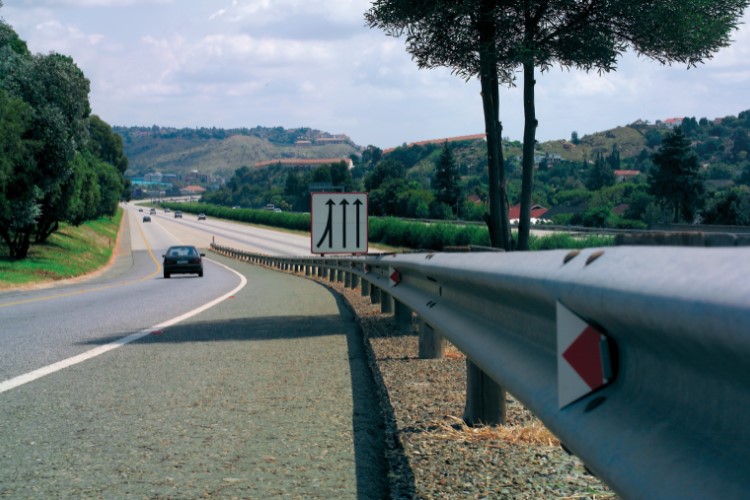Road guardrails form an integral part of keeping motorists safe – or, at least, safer – than would have been the case if the rails were not present. A traffic barrier forms a boundary that acts as a buffer between the road and an obstacle or hazard behind the rail. If the presence of guardrails poses a bigger danger to the motorists than their absence, it is better not to install such rails on the specific section of the road. Road agencies and engineers work together to determine where to safely install guardrails in order for them to be effective barriers. Such systems, when installed at the right places, act to deflect, absorb, redirect, and prevent accidents.
The entire system works together to deflect the colliding vehicle away from the barrier and back onto the road. It deflects the vehicle sufficiently to prevent it from breaking through the barrier. It absorbs the brunt of the impact energy to prevent the vehicle from having to receive the full force, thereby reducing the impact on the vehicle and its passengers. At the same time, it disperses the kinetic energy of the impact across the rail. This is what makes it so strong and effective. A frequent problem that was experienced in the past was that the beam’s end could penetrate a vehicle when impacted from the front or at a slight angle. This used to be a cause of many deaths. Considering that it is a safety product, guardrails must be designed in such a way as to minimise injury so, to counter the problem, special end terminals have been designed to prevent penetration. Some designs allow for the beam to roll up from the front on impact to prevent penetration of the vehicle body.
Another design aspect to consider is the wooden or metal posts to which the beams are attached. They must be driven into the ground with the appropriate spacing between them to allow for just the right length of beam to absorb the impact and disperse the kinetic energy. The height of the horizontal W-beams must be sufficient to prevent vehicles with a higher ground clearance from vaulting over the beam and into the hazard behind. The design of road guardrails thus focuses on creating a safer driving space. This means it must cater to different vehicle types, sizes, and speeds, as well as different angles of impact to effectively contain the straying vehicle. The basic components of W-beam guardrails include wooden or steel posts that are anchored in the soil and that carry the long W-beam steel rail. The rail also has delineators, which can be D-shaped or V-shaped to make them highly visible, even in rainy conditions and at night. The guardrails, furthermore, have end terminals – or the ends are buried in the soil to prevent penetration of vehicles when impacted from the front.
Several factors are taken into consideration when selecting and installing guardrails. Such factors include:
- Whether it is essential on the particular road.
- The available space behind the beam to allow for movement of the rail upon impact.
- The space between the rail and the hazard against which it protects.
- The average speed of travel on the particular section of the road.
- The shortest and longest length required.
- The height of the vehicles using the specific section of road.
- Whether it is needed on the median between opposing lanes or as side barrier.
- The type of hazard against which it must protect, such as a body of water, slope, cliff, wall, etc.
- Whether it must protect pedestrians and cyclists from straying vehicles.
- The risk of accidents on the particular section of road.
SANRAL follows AASHTO standards when selecting and installing traffic barriers. These barriers must undergo specific tests to verify their performance under various conditions. Considering the nature of these products and their function being to prevent accidents or the severity of injuries, it is understandable that only products from manufacturers adhering to the SANS and ISO standards should be considered. Armco Superlite meets these requirements with our range of road-safety products. These include the W-beam guardrails that are widely used alongside South African roads. These products are manufactured according to SANS and international standards. Get in touch for more information about our products and for installation assistance.

